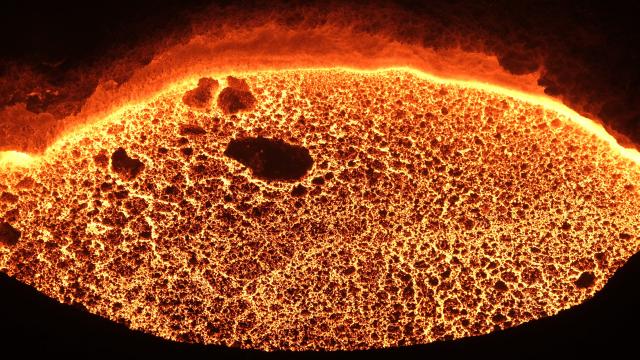A Dutch brewery is using iron powder as fuel to demonstrate its potential utility as a carbon-free power source, New Atlas reported on Wednesday.
Very small particles of iron burns well at high temperatures, releasing energy as they oxidize that can be used in industrial processes or power generation. Eindhoven University of Technology students first demonstrated the practicality of the iron combustion process in 2018 with a 20 kilowatt system (about the same level of power as a conventional central heating boiler) that generated electricity, hot water, and steam. Combusting the iron power only creates one direct byproduct — iron oxide (rust) — which can be converted back to iron with electricity, perhaps generated by renewable sources in a carbon-neutral cycle.
A world premiere today at our Bavaria Brewery: the first industrial installation on iron fuel has been taken in to production. It’s a CO2 free and circular way to create thermic energy that we can use in our brewing processes. Thanks to our cooperation with @TUeindhoven pic.twitter.com/v9CnqxUPqK
— Peer Swinkels (@Peer_Swinkels) October 29, 2020
According to New Atlas, Swinkels Family Brewers in the Netherlands has become “become the first business in the world to put this process to work at an industrial scale” at its Brewery Bavaria, in conjunction with the Metal Power Consortium and Eindhoven researchers. Advantages of the system include how common and affordable iron is — it’s one of the cheapest metals in the world — and its good energy density.
New Atlas noted that iron powder is also easy to transport and requires no special effort to store; it can be lugged around, burned as necessary, and the iron oxide waste collected for renewal. This could be particularly helpful in industries that can’t easily switch to renewables.
“The beauty of iron fuel is that you can release the energy stored in iron fuel when and where you need it,” TU Eindhoven professor of combustion technology Philip de Goey said in a university press release. “If you grind iron into a powder, it becomes highly flammable and this combustion releases a lot of energy in the form of heat. This heat can meet the industry’s energy demand.”
New Atlas wrote that the primary obstacle to large-scale adoption is recycling waste rust generated during the process. The recycling process could be used to retain a portion of the excess energy produced by solar panels, wind farms, hydroelectricity, and other clean power sources, though research indicates this might not be particularly efficient:
The round-trip energy cycle efficiency of this system is dependent on the processes used to put the energy into the iron in the regeneration process. High-efficiency electrolysis of iron oxide can store as much as 80 per cent of your input energy in the iron fuel, according to this 2018 paper — a figure similar to what you get with modern hydrogen splitting.
… Using this kind of cyclical process to generate electricity could approach a theoretical efficiency around 40 per cent, again according to this 2018 paper. It might seem a little odd to generate renewable energy, then toss 60 per cent of it out in the form of inefficient steam turbine generation processes, but this could end up being a flexible and cost-effective way to capture, distribute and even export renewable energy that’s generated at inconvenient times when there’s no demand for it to be fed directly into the grid.
There’s other downsides of the technology noted by De Ingenieur. Combustion of metal fuels produces nitrogen oxides, similarly to hydrocarbon fuels, due to the high temperatures involved — though likely in less quantity and in a manner that could be minimized through clever engineering. Particulate iron powder is also a concern. Both the nitrogen oxide and particulates may require the use of filtration systems.
The other major technical obstacle is recycling the iron without generating large amounts of carbon dioxide in the first place, which would require the development of the aforementioned high-energy electrolysis technology. The economics of the whole thing aren’t yet clear and may not end up comparing favourably to more traditional sources of renewable energy.
“There’s already a follow-up project which aims to realise a 1 [megawatt] system in which we also work on the technical improvement of the system,” Chan Botter, the leader of the Eindhoven University student team conducting the research, said in the release. “We’re also making plans for a 10 MW system that should be ready in 2024. Our ambition is to convert the first coal-fired power plants into sustainable iron fuel plants by 2030.”
According to New Atlas, the cyclical iron fuel system installed at Brewery Bavaria is capable of fuelling the generation of 15 million glasses a beer annually.
Editor’s Note: Release dates within this article are based in the U.S., but will be updated with local Australian dates as soon as we know more.
